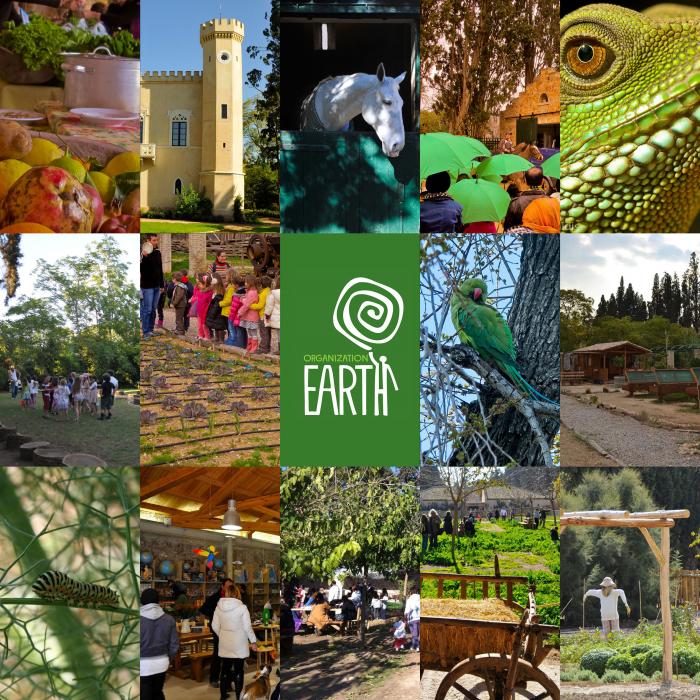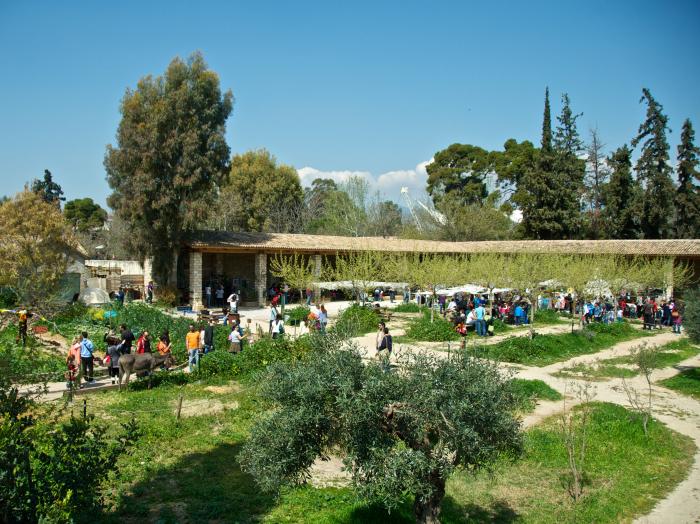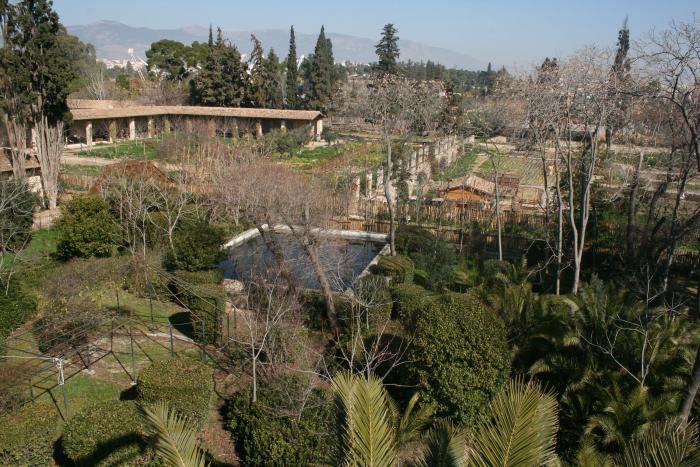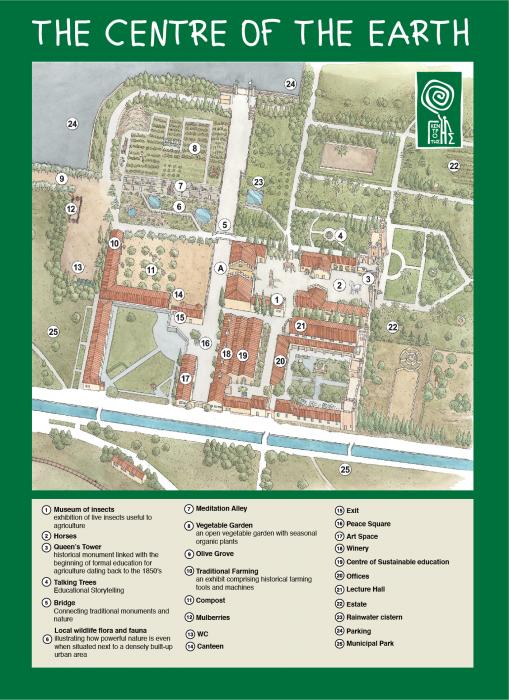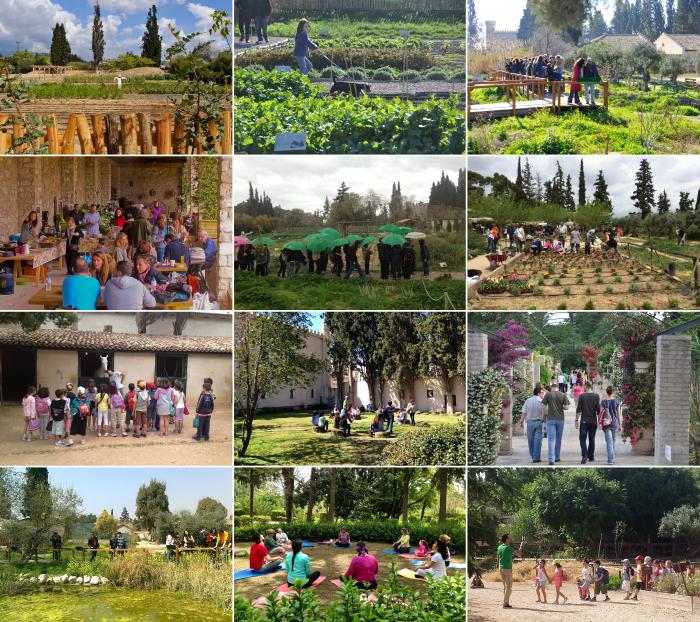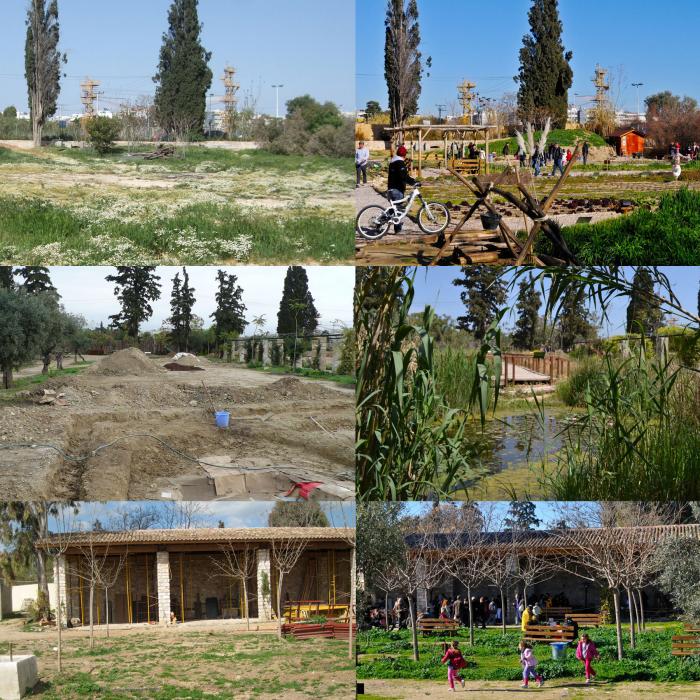I. SUMMARY INFORMATION
Project
267632
Status
Submitted
Award category
Reinvented places to meet and share
You want to submit
NEW EUROPEAN BAUHAUS AWARDS : existing completed examples
Project title
Centre of the Earth
Full project title
Experiential education for the development of Environmental Social Intelligence
Description
The aim of the Centre of the Earth is to inspire confidence to humans so that to they may enjoy again nature, respect it, and mostly act for its protection and for upgrading their quality of life.
Environmental Social Intelligence is the type of human intelligence that we wish to develop among all users of the precious goods that are offered by the Earth, as it is clear that these goods are finite and that their reckless usage leads to the creation of a social and environmental cost.
Where was your project implemented in the EU?
Greece
Attiki
67, Democracy Ave
38.04256157741263
23.722238763819636
Helion
13122
When was your project implemented?
Has your project benefited from EU programmes or funds?
No
Which programme(s) or fund(s)? Provide the name of the programme(s)/fund(s), the strand/action line as relevant and the year.
II. DESCRIPTION OF THE PROJECT
Please provide a summary of your project
The Center of the Earth begun as a project, by Organization Earth a Greek civil society organization, in 2012 to revamp the abandoned parts of a 200 year old agricultural farm with historic importance located in Athens, and to turn it though design consultation with the participation of visitors, volunteers and employees, to a public urban green space that would be pleasing, familiar and humble and at the same to operate it as center of innovative and experiential education on sustainable development.
Structures are built or renovated with traditional and sustainable materials. Visitors take part in recycling, composting, upcycling and fauna cherishment, through learning activities and experiential education, co-creating a meeting place, that feels partly their own.Here, local community members, schoolchildren, university students, companies, people with disabilities, refugees, and disadvantaged youth are all invited to connect with nature, through various innovative participatory programs, even to prepare community meals with locally sourced seasonal, organic produce. The Centre of the Earth as a multifaceted non-profit civil society venue hosts activities open to the public that span all 17 Sustainable Development Goals, facilitates projects, services and partnerships addressing major societal challenges, such as long-term unemployment and migration. In parallel, it promotes new business models for responsible and social entrepreneurship, particularly related to the green and circular economy, while taking steps to tackle climate change by offering nature-based experiential learning activities.
The aim is to inspire confidence so we can all enjoy nature, respect it, and to act for its preservation in order to ameliorate everyone's quality of life. Environmental Social Intelligence is the type of human intelligence highlighting the dependence on Nature for Society's survival,
Please give information about the key objectives of your project in terms of sustainability and how these have been met
The Centre of the Earth was created so people can gather together to teach and learn about sustainability in a hands-on manner, including to test different approaches and new methods on how to achieve sustainability systematically but also how to adopt sustainable lifestyles personally especially for citizens living in large urban centers.
By including a truly functioning seasonal organic vegetable and fruit garden one of the highlights of our impact has been the learnings regarding sustainable food systems. Thus in terms of sustainability one of the main objectives of the project has been to contribute through learning activities to resilience to climate change, through the adoption of a fairer, healthier and more sustainable local and ultimately global production and consumption, rooted in an integrated ecosystem approach. At the Center of the Earth we have explored adaptation and mitigation to climate change regarding sustainable-healthy-fair food systems, in the framework of the right to adequate & healthy food for all.
Since the adoption of the Sustainable Development Goals in 2015, SDG 2 to “End hunger, achieve food security and improved nutrition and promote sustainable agriculture” has been incorporated in the Centre's curiculum exploring further the connections between sustainable agriculture, empowering small farmers, promoting gender equality, ending rural poverty, ensuring healthy lifestyles, tackling climate change.
Furthermore, operating a small farm based on the principles of agroecology, regenerative agriculture, organic permaculture, etc has helped us practice and in many instances achieve the true essence of circularity, the one taught by Nature itself.
Please give information about the key objectives of your project in terms of aesthetics and quality of experience beyond functionality and how these have been met
The objective of the “Center of the Earth” was to invite people to co-create a beautiful natural environment, within a densely populated area at the heart of the Athens Metropolitan Area, Greece’s capital and most urbanized location of the country, at the same time to use it for experiential learning regarding sustainability. In other worlds the user experience was centered at hands-on, practical, do-it-yourself practical activities, that was utilizing all the available scientific knowledge with fun and creative methods.
In terms of aesthetics, all aspects of our project has been based on nature-based solutions and respect to the surrounding natural environment and showcasing the beauty of Nature itself. The physical infrastructure and facilities, at the peak of our project, consisted of:
• An organic vegetable and fruit garden, with seasonal and local produce, highlighting the importance of sustainable food systems.
• A biodiversity garden with local wildlife flora and fauna, illustrating how powerful nature is even next to a densely built-up urban area
• A picturesque olive grove with hundred-year old olive trees
• Access for visitor to the adjacent vineyard and winery that produces organic wine
• Several hundred-year old buildings and structures, renovated in harmony with nature used for seminars, debates and social gatherings, including housing Greece's first Eco-Bookstore.
Please give information about the key objectives of your project in terms of inclusion and how these have been met
Based on the premise that environmental degradation and climate change are the basis for deepening inequalities already existing today and increasingly so in the decades to come, the Center of the Earth offers experiential soft and hard skills capacity building in collaboration and with the participation of people belonging to vulnerable societal groups, such as: the Long Term Unemployed, Refugees and Migrants, People with Intellectual Disabilities, Senior Citizens
The highlight of our social inclusion and social empowerment programs throughout the years have been the Center of the Earth’s Urban Farming Workshops. Participants improve their mental and physical health and their quality of life by adopting a healthier nutritional model and by understanding the value of sustainable food production, including the need for healthy soils or the reasons behind food loss and food waste. At the same time the program introduces participants that also act as volunteers to the practices of urban gardening and organic agriculture through experiential learning, which in turn enhances the opportunities of community engagement and skill development and social empowerment.
Furthermore, the project aimed at fostering social inclusion opportunities by inviting the general public at large to contribute to participatory projects and events, including the infamous "Sundays on Earth, where the Center welcomed citizens to work collaborative in the gardens, gather the fresh produce of the day, cook together and by using the motto "never eat alone" to recreate a traditional Sunday family lunch/dinner for hundreds of locals and visitors every Sunday dubbed the "Collective Kitchen".
Please give information on the results/impacts achieved by your project in relation to the category you apply for
In the 9 years of its operation more than a million visitors have participated in the Centre of the Earth activities, more than 150.000 schoolchildren have attended one of the educational programs, more than 10.000 adults have followed the Urban Farming Workshops.
The farm created in the 1850s is today visited by citizens thus promoting a sustainable and responsible economic activity, having in the process given employment to dozens of individuals
Attesting to the hopeful impact of the project, in 2016 the International Union for the Conservation of Nature (IUCN) named the Centre of the Earth, as the best initiative worldwide connecting urban populations to Nature (Nature4All Award), as well as receiving the 2019 Greek NGO of the Year Award at the Hellenic Responsible Business Awards for the environmental category.
Please explain the way citizens benefiting from or affected by the project and civil society have been involved in the project and what has been the impact of this involvement on the project
Citizens involved in the project have taken away several different practical learnings, from understanding the concept of responsible production and consumption to adopting healthier lifestyles and gaining a overall respect about Nature. Others, after participating in the Urban Agriculture Workshop have created their own gardens in courtyards, roofs and balconies. A few even started new careers working with the land or moved to rural areas. The most important impact however has been the understanding that we can all take action towards sustainability, fostering a fair and equal society is everyone's responsibility and the empowerment felt by participating in the design of practical solutions. In another aspect, citizens belonging to vulnerable groups have benefitted as well, for example the fresh produce and organic vegetables of the Centre of the Earth that surpass 2 tons per year are offered to civil society organizations that assist communities and individuals lacking access a healthy and nutrutional diet.
Expanding the last example to also mention our work with our other civil society actors, the Centre of the Earth has always been a open space of collaboration and synergy creation. Civil society organizations, grass roots groups, informal teams of advocates of sustainability and broader coalitions of change-for-good have participated in events, hosted their own activities, utilized the facilities to onboard their volunteers, etc. Some of the most known entities like Greenpeace, WWF, ActionAid, have been involved at different stages of the Centre of the Earth development. However the list of lesser known volunteers groups is much larger and perhaps even more encouraging in order to nurture local actions.
Lastly, the Centre of the Earth even incubated and hosted on its premises several spinoffs like Greece's first start-up accelerator catering to impact investing, green ventures, business-for-good entrepreneurship, called Aephoria.Net
Please highlight the innovative character of the project
The dominance of the environmental threat in the public debate creates a widespread feeling of weakness in terms of humans being able to do something effective or «something that is not futile». the Centre of the Earth, on the contrary, broadcasts a different message. A message of optimism that there are many actions that we may proceed to, actions that on the one hand, offer realistic solutions to environmental problems and also act positively for the human psyche, creating a positive internal feeling in each of us, one connected to the quality of life and collective prosperity. At the time of the Center of the Earth's launching this was quite an innovative approach.
As mentioned earlier, the Centre of the Earth aspires to showcase not just the environmental but also the social aspect of issues. It is important that we all understand that society and the environment we always mutually dependent, and that environmental issues must be examined under the prism of a relevant new science, of environmental sociology.
According to this discipline, global sociopolitical indicators such as over-population, immigration, war violence, over-consumerism, the global economic crises financial or otherwise including the recent pandemic all have a direct impact on the environment and are interlinked. A further aim of the activities at the Centre of the Earth was to not impose on the visitor a specific viewpoint, but, on the contrary to mobilize and to hone individual action and responsibility in each of us, creating fertile debate, and blunting intellectual differences so that we may become able to operate effectively on a collective level.
Please explain how the project led to results or learnings which could be transferred to other interested parties
The Centre of the Earth has for many years acted as a launchpad for several different satellite projects and citizen engagement activations predominantly around Athens, like the creation of community gardens in Refugee camps, roof top vegetable gardens in abandoned buildings in the downtown area, pocket parks with herbs and aromatics in highly populated neighborhoods. Besides creating in a collective manner much needed public green spaces, the Centre of the Earth and its team has instigated projects in schools, urban parks and public squares always including the elements of greening as a means for social cohesion and to highlight the importance of access to a healthy environment as a basic human right.
In our opinion the transferability of the project does not rely on the actual "blueprints" of the renovation that took place, but on the "software" collectively created. Meaning the citizen engagement aspects of the venture, that the Centre of the Earth through dozens of collaborations already offers freely to other like-minded parties.
For that reason, if our project is chosen for one of the NEB Prizes our aim would be to finance an impact assessment of the last 10 years and a transferability toolkit for the creation of similar on even more advanced projects.
Is an evaluation report or any relevant independent evaluation source available?
No
III. UPLOAD PICTURES
IV. VALIDATION
By ticking this box, you declare that all the information provided in this form is factually correct, that the proposed project has not been proposed for the Awards more than once under the same category and that it has not been subject to any type of investigation, which could lead to a financial correction because of irregularities or fraud.
Yes
